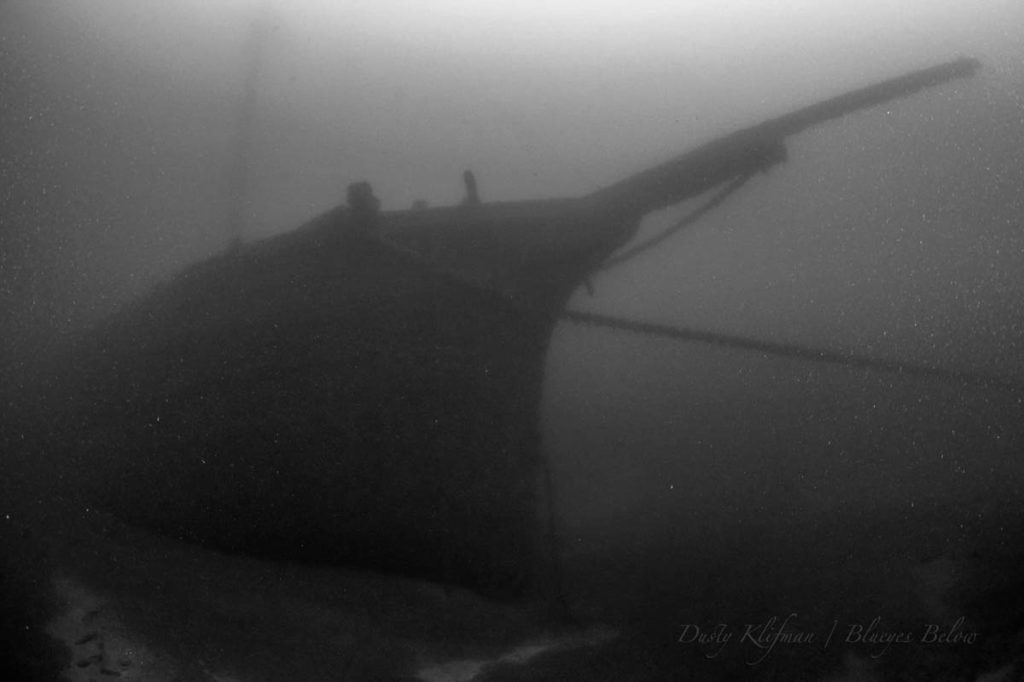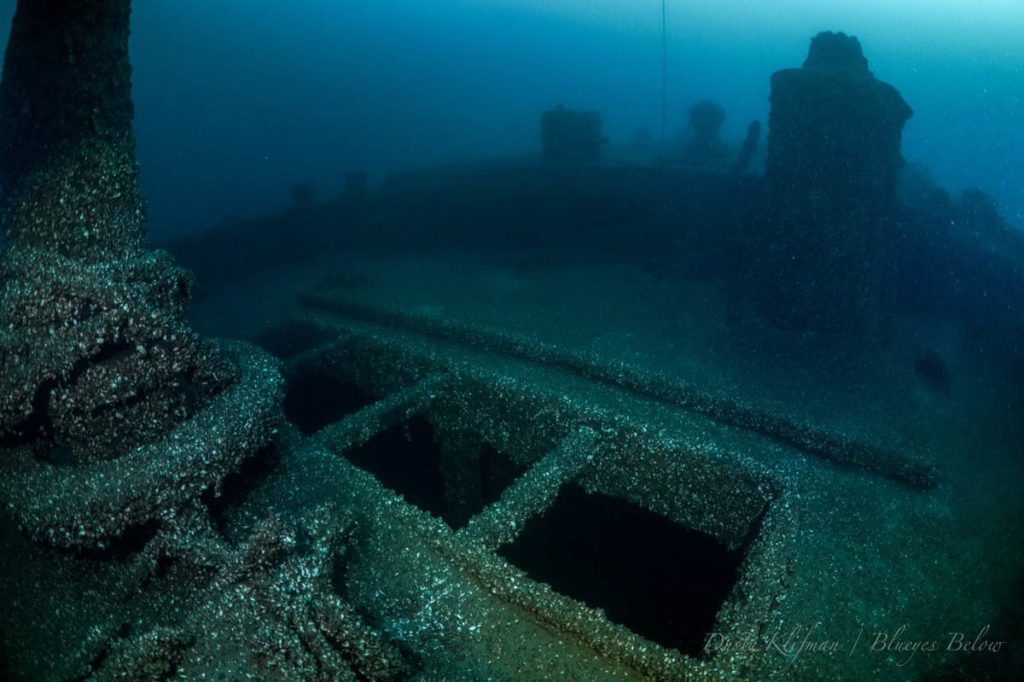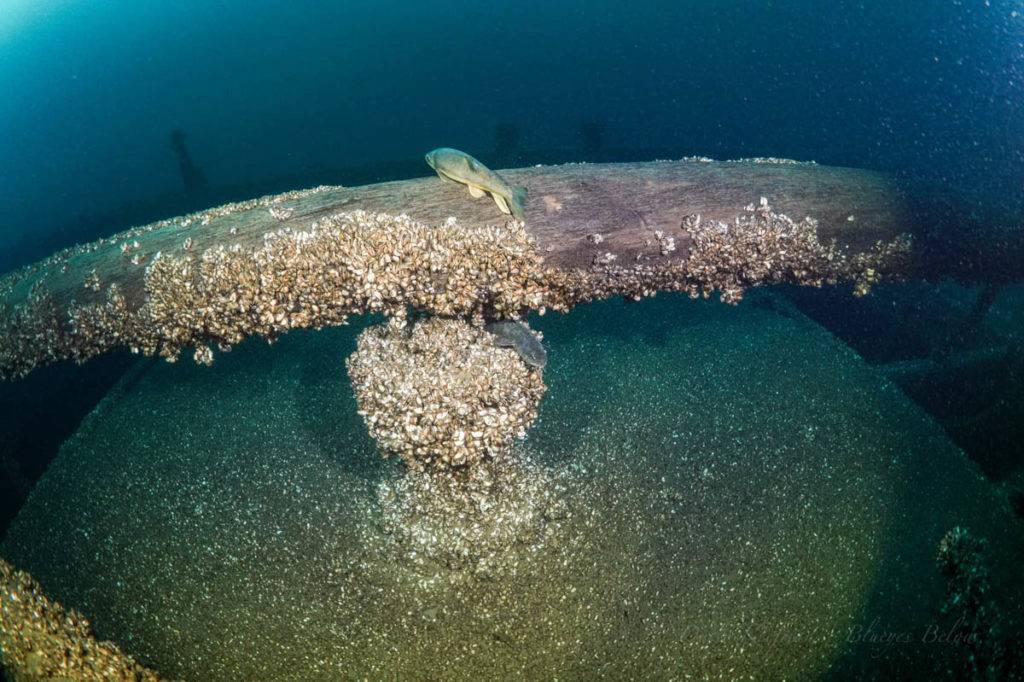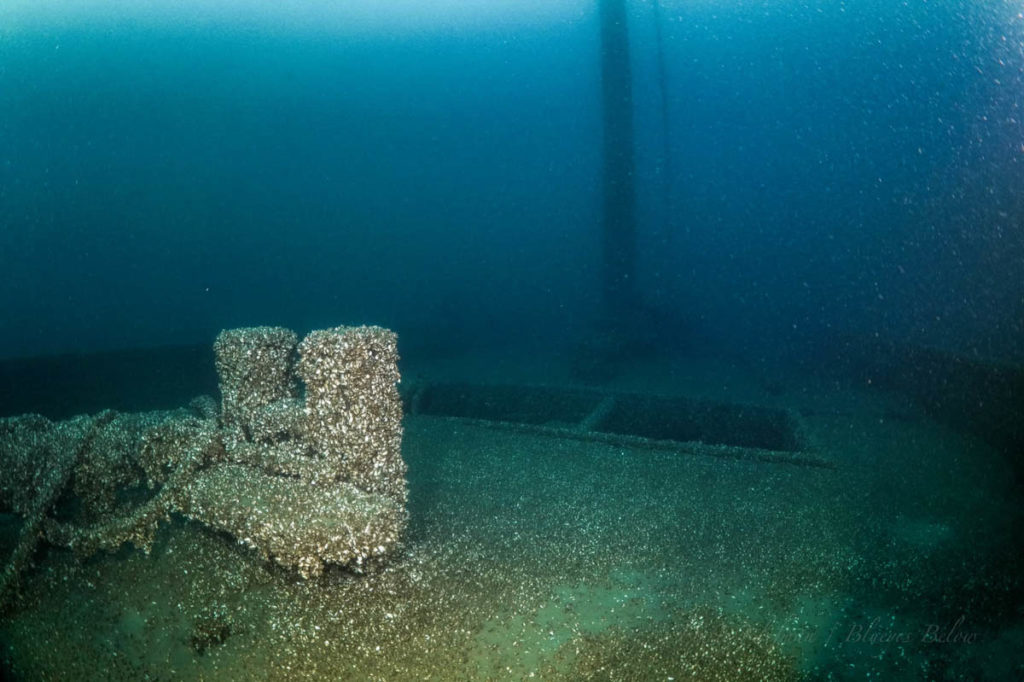During April 1893, when under tow by the steamer Charles Eddy, the Newell Eddy, a schooner barge was lost in a gale. When the tow line broke, leaving the Eddy drifting towards Bois Blanc Island, they were on Lake Huron, just below the Straits of Mackinac. The Newell was filled with grain and headed to Chicago. It was believed that the ship was stopped from setting sail by frozen rigging. The crew of nine were never found. The ship lies just north of the Raynolds Reef, leading to theories that the Eddy washed into the reef before settling into deep water on the other side, breaking off its stern. The GPS position of Nelson Eddy is N45 ° 46.885 ‘W84 ° 13.817’ at 168 feet below. She has a length of 242 feet and a beam of 40 feet. She was able to carry 1270 tonnes.
The Straits of Mackinac are small waterways connecting Michigan’s Lower and Upper Peninsulas in the U.S. state of Michigan. Under the Mackinac Bridge, the main strait flows and links two of the Great Lakes, Lake Michigan and Lake Huron. The main strait is 5.6 kilometres (31⁄2 miles) wide and has a maximum depth of 90 metres (295 feet). Hydrologically, one lake, which is called Lake Michigan-Huron, can be considered to be the two related lakes. The Mackinac Straits are whipsawed by currents unlike anywhere else in the Great Lakes. There are 12 marked shipwrecks in the Straits of Mackinac, with additional sites in the shallows near the shore and some in deeper waters nearby. The cause of the majority of area wrecks was frequent fog, ice, gales and narrow shipping lanes.
In 1992, a University of Michigan research vessel found the Eddy in 165 feet of water. As a ship went down, it was common practice for the crew of schooners to head for the rigging. The Eddy settled upright, but below 50 feet is the tip of the mainmast and not much use for the crew who presumably scrambled up the ratlines as the ship filled with water and sank.
“The Newall Eddy was a 13.5-mile boat ride to the site from Hammond Bay and sits around 165’ deep in Lake Huron. Water temperature was 42°F. Visibility was decent and I estimate it to be 60-80 feet of vis, but it was a bit dark. Being able to dive in the very late fall was a treat and I will take what I can get.”
Dive Report from Dusty Klifman
Thanks to Dusty Klifman of Blueyes below for his photos and dive report.
Follow Blueyes below (Dusty Klifman) diving adventures on Facebook










